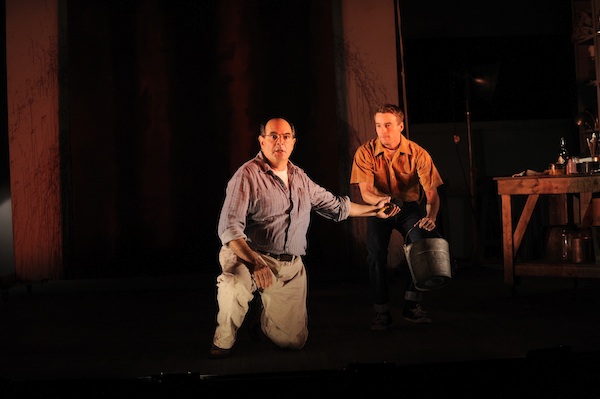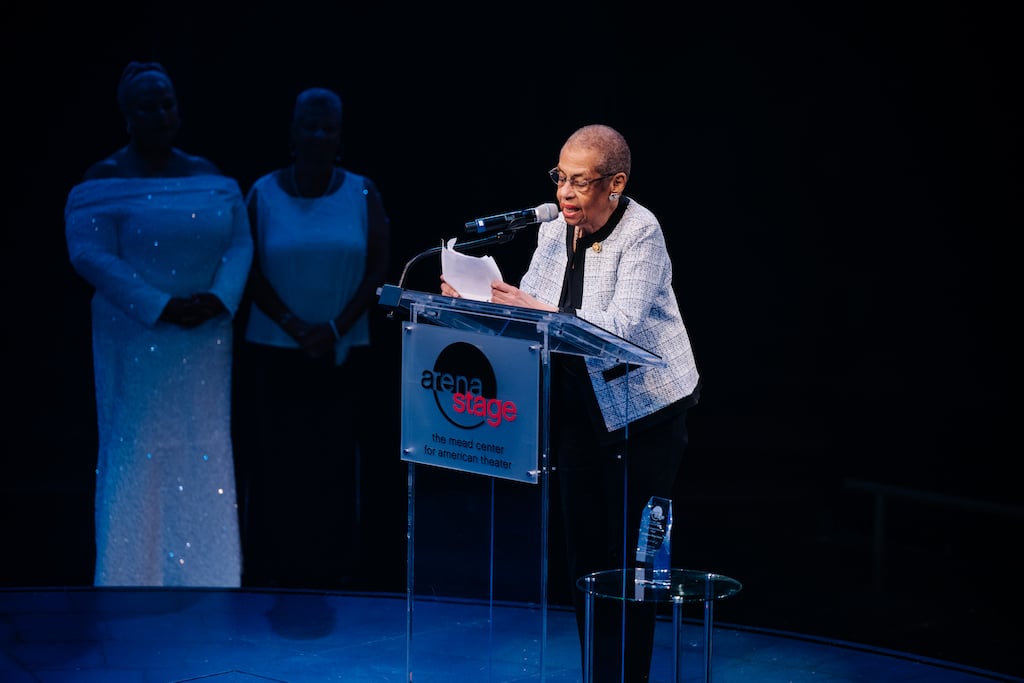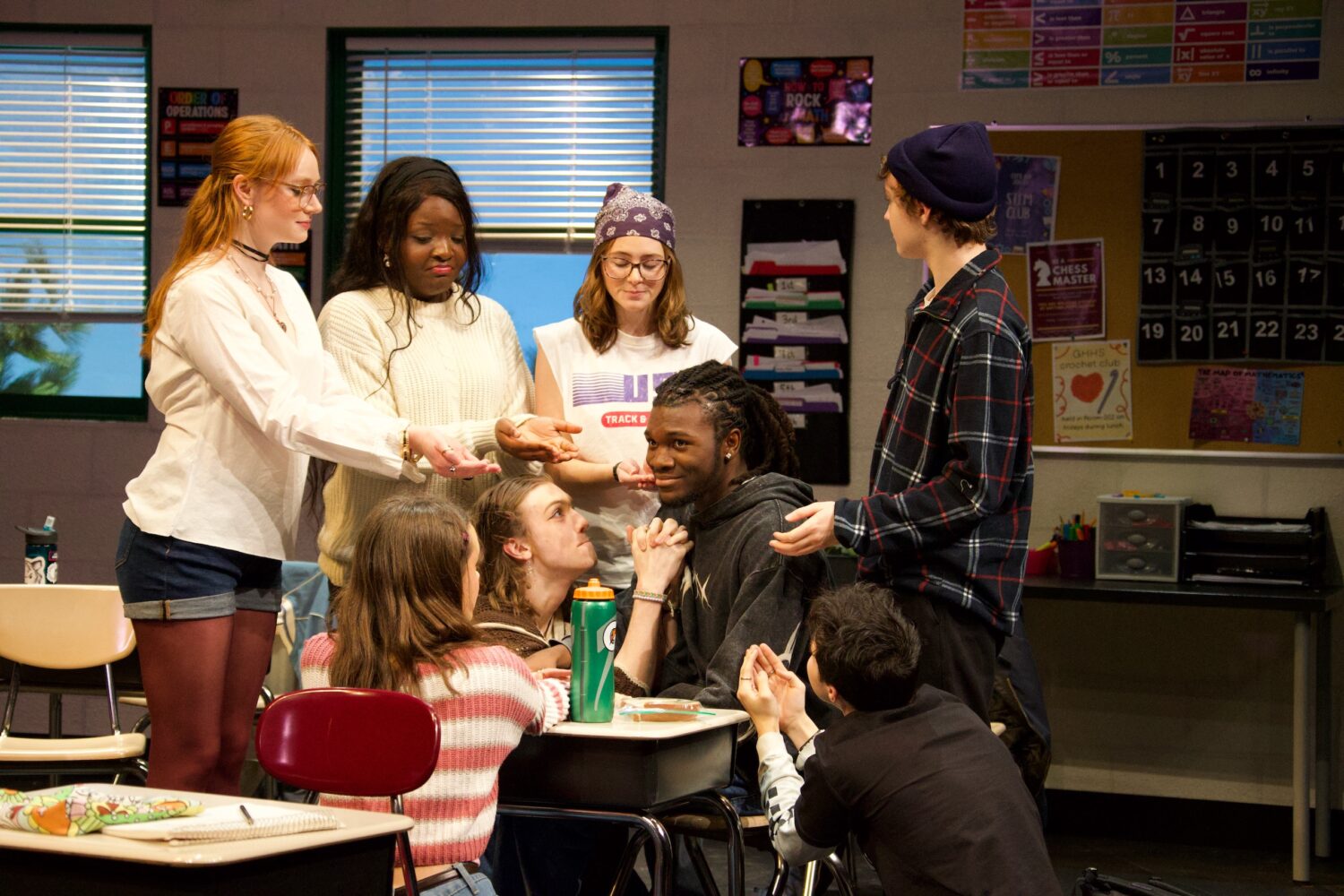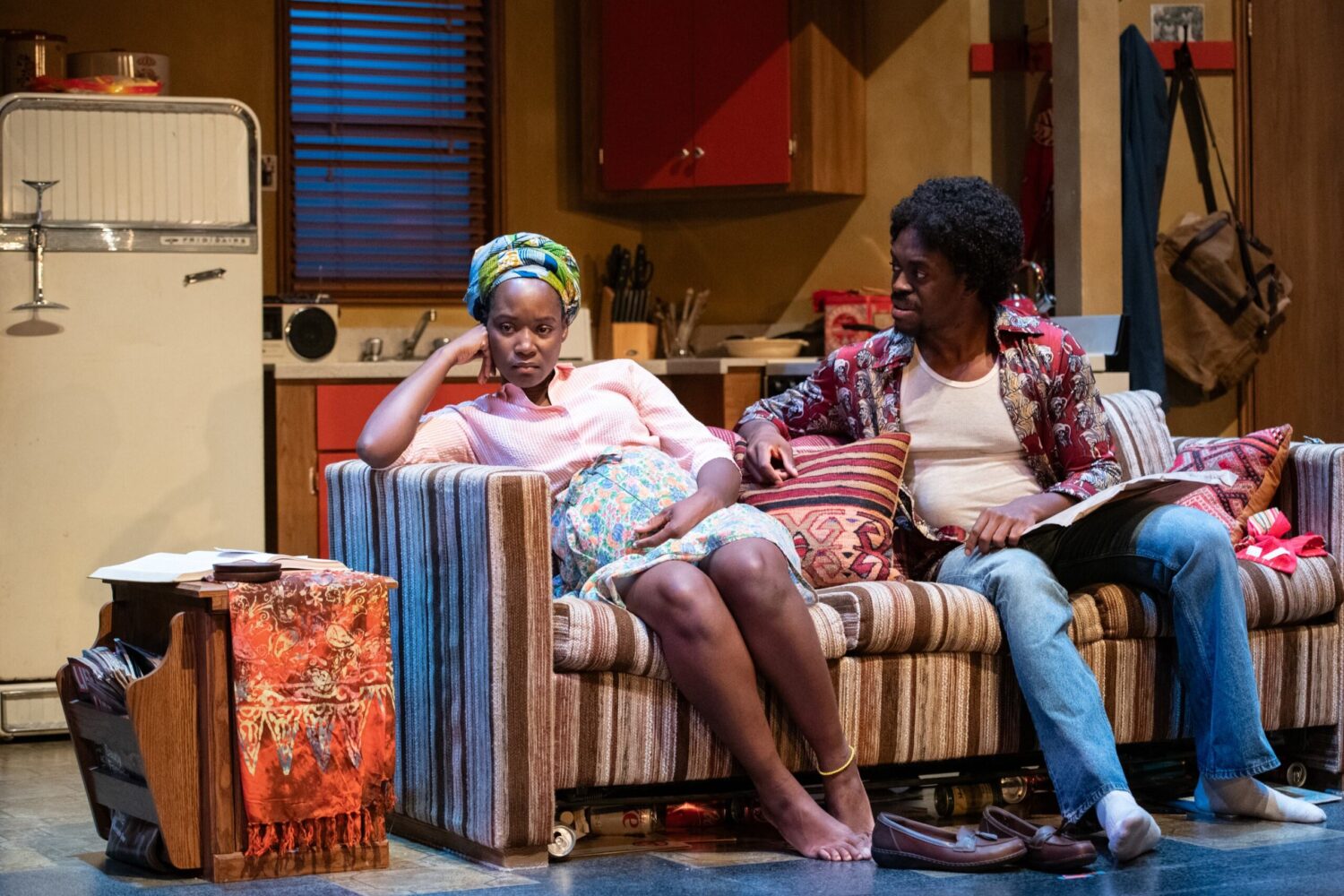Edward Gero as Mark Rothko and Patrick Andrews as Ken in the 2011 Goodman Theatre production of Red. Photograph by Liz Lauren.
For Edward Gero, 2011 was something of a banner year. The four-time Helen Hayes Award winner and George Mason professor played a Talmudic scholar in Chaim Potok’s The Chosen at Arena Stage; delivered a critically acclaimed performance as Salieri in Amadeus at Round House; hopped over to Chicago to tackle the role of Mark Rothko in Goodman Theatre and Arena Stage’s co-production* of Red; and returned home to Washington to play Ebenezer Scrooge in A Christmas Carol at Ford’s Theatre. “It was a challenge, but one I’ve been waiting for for a very long time,” Gero says. “These kind of roles are what you train for, and you dive into them because you never know how long they’re going to last.”
Gero reprises his role as Rothko this month in John Logan’s Tony Award–winning Red, which starts previews at Arena Stage on Friday. The Goodman Theatre production, produced in association with Arena, was described as “superbly taut and compelling” by the Chicago Tribune, and has already extended its Washington run thanks to overwhelmingly positive ticket sales. To research the artist, Gero spent time in the Rothko Room at the Phillips Collection, read several books (including James Breslin’s 1998 biography), and interviewed artists who’d studied with Rothko; but he also first had to tackle his own skepticism of abstract art. “I knew Rothko as a painter, but I think I was among the crew of viewers who would have questioned what it was all about,” he says. “Beautiful colors, but I didn’t really understand what he was going for. So the research phase was eye-opening for me.”
Red—whose Broadway run received seven Tony nominations, including one for Best Play—looks at Rothko during the late 1950s, when the artist was working at what director Robert Falls calls “the height of his powers.” Commissioned to produce a series of paintings for a new restaurant in the Four Seasons hotel, Rothko is shown working with an assistant, Ken (an entirely fictional character), in his studio in the Bowery. “John [Logan] gives everyone the guidelines of what he’s looking for, and in this case it was to produce a working, living, breathing artist’s studio that felt absolutely real—down to the smell of turpentine when the audience enters the room,” says Falls.
When considering who could play Rothko, Falls says Gero was his immediate choice. The pair worked together on Goodman’s 2009 production of King Lear, which also ran at Shakespeare Theatre Company in Washington. “I needed an actor who had an almost kingly presence, with a tremendous sense of language and a really heightened intellectual capacity,” Falls says. “I had Ed’s voice in my head when I read the play, and it also didn’t hurt—although this isn’t essential—that he looked a little like the real Mark Rothko.”
For Gero, the complex role was enormously rewarding. “Rothko was incredibly serious about his work, a great genius, an outsider, I think, being an immigrant,” Gero says. “He was a bit of a grouch even in his early days. But I think he was lonely. He was trying to do something of significance and was always concerned he was a fraud. I certainly don’t pretend to have the kind of genius he does, but I do appreciate the struggle of taking great pride in your work and having it taken seriously.”
Both Gero and Falls say bringing Red to Washington is exciting because visual arts here are so entrenched in local culture. “I went down to the National Gallery to see the Seagram Murals they’re exhibiting there, and it struck me that here in the center of the Mall is a huge monument to visual arts,” says Gero. “Washington is a very vibrant theater town, for sure, but at its core it’s also establishing itself as a visual arts town, so I’m excited to play it for that audience.” Falls agrees that Washington audiences present an invigorating challenge. “There’s a very sophisticated audience for contemporary work in Washington, and a great awareness of the arts,” he says. “I think the two are going to coincide brilliantly.”
If the play’s box office sales so far are anything to go by, neither will be disappointed. Gero recalls Falls’s surprise at the audience’s reaction to previews in Chicago. “People were standing up at the end of the play, and Bob said, ‘I don’t know if they wanted to stretch their legs or if they really liked it, because people don’t do this in Chicago,’” Gero says. “I said, ‘Bob, I think you might have to give yourself some more credit.’ And sure enough, they were on their feet at the end of the play virtually every night for the rest of the run.”
*This piece originally said the play was a production of Goodman Theatre only. We apologize for any confusion.
















